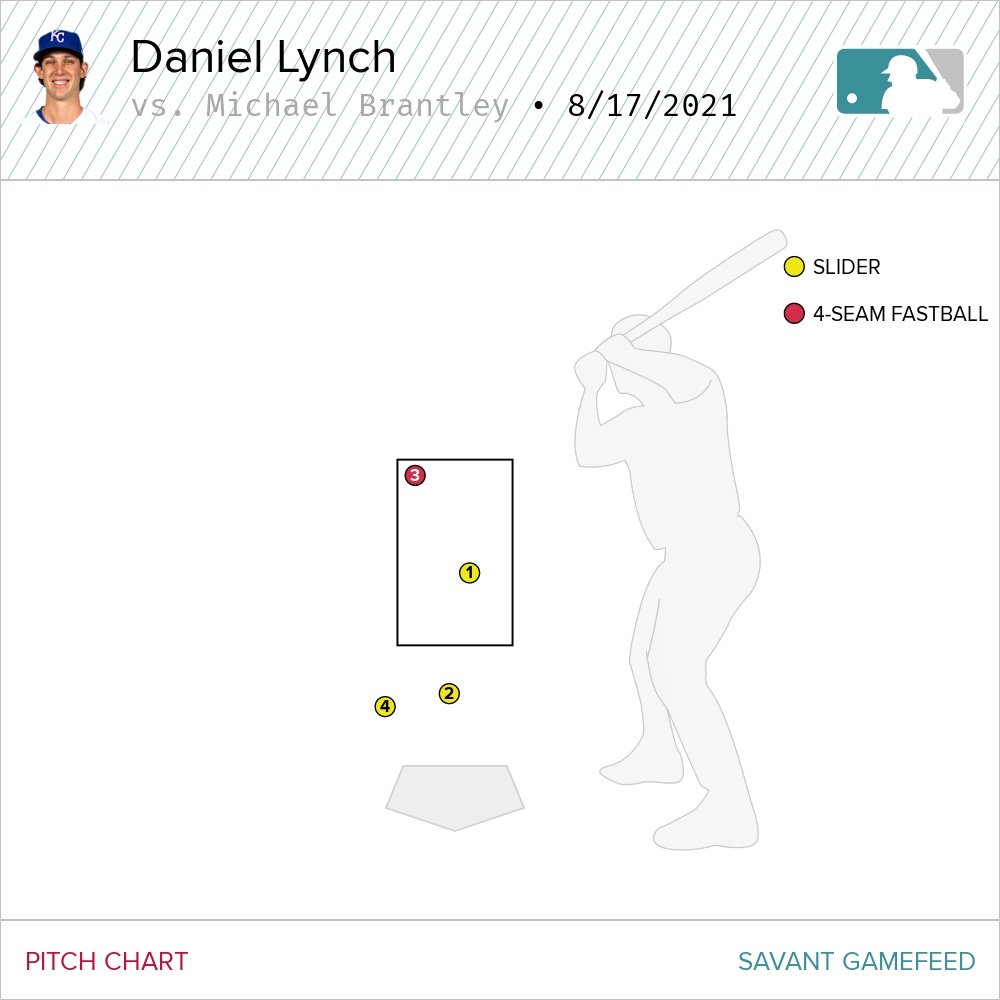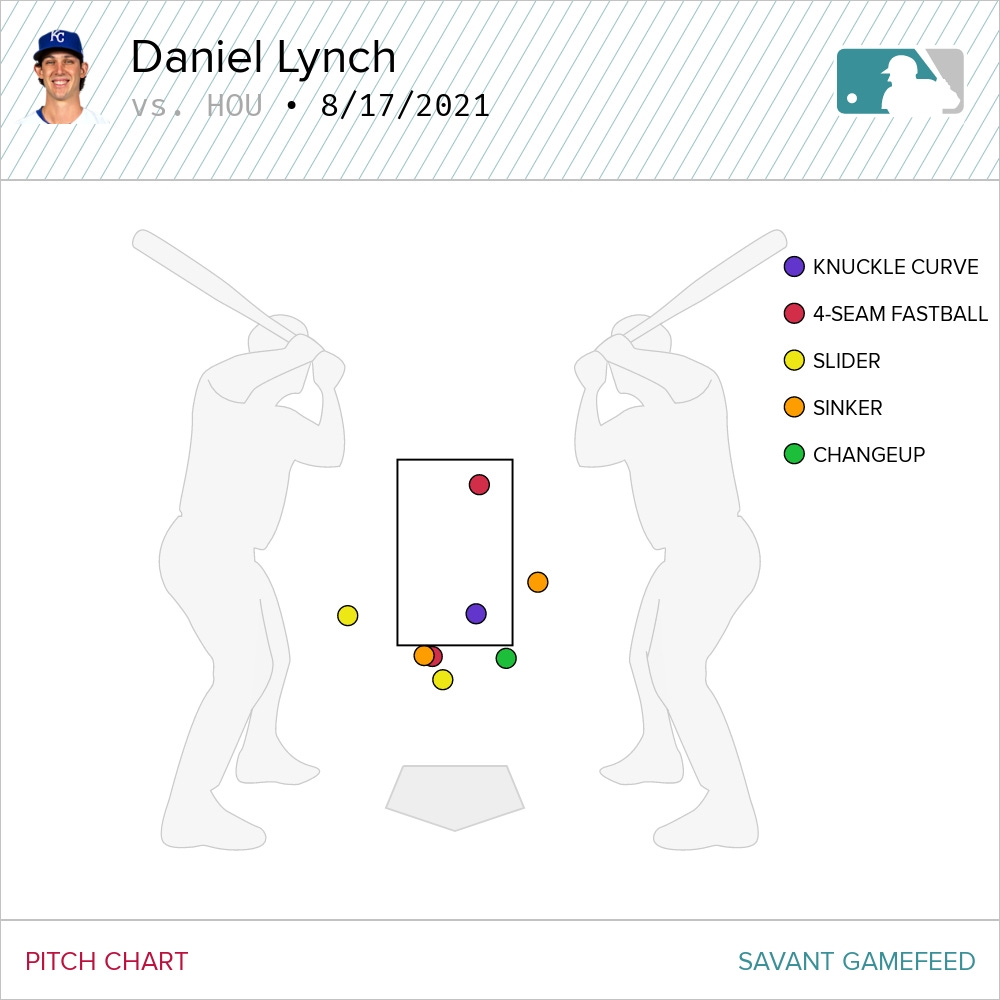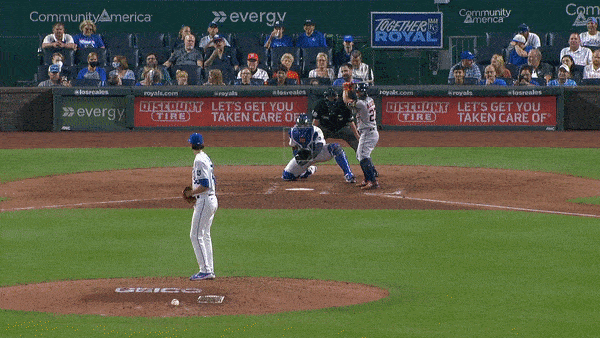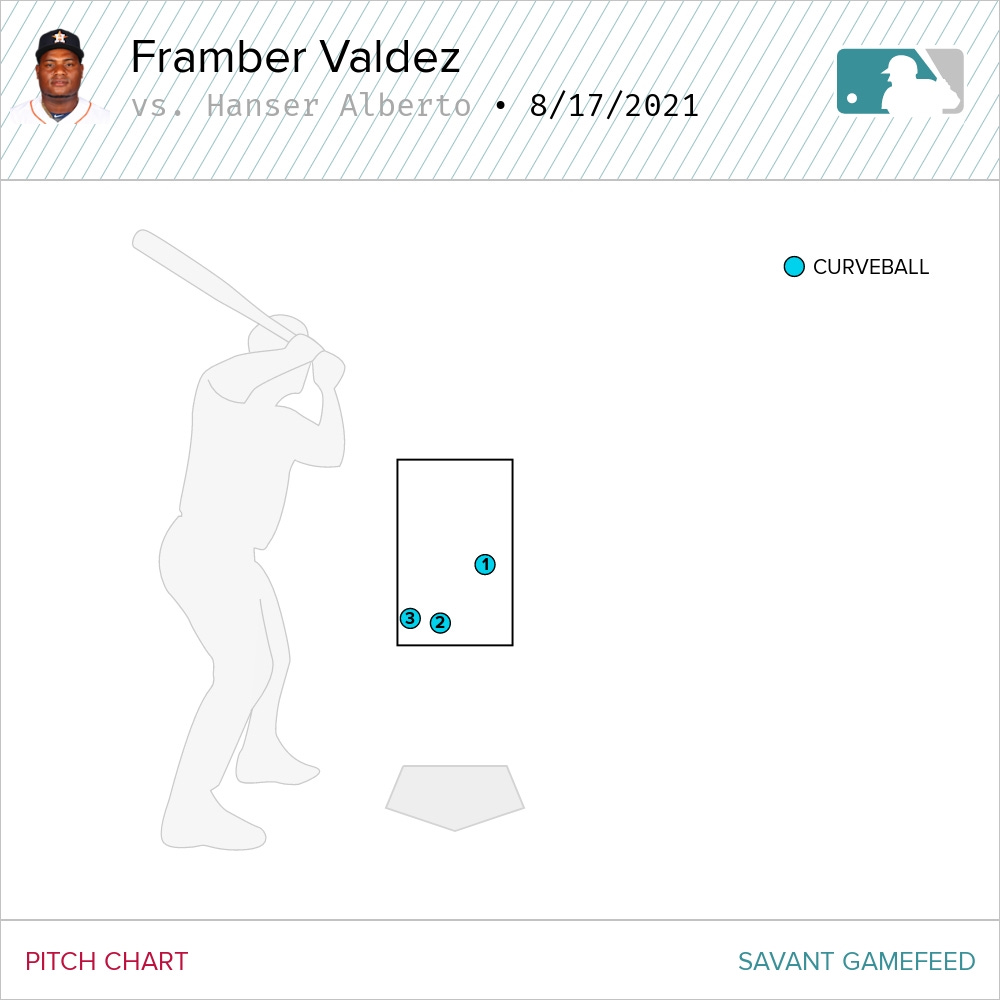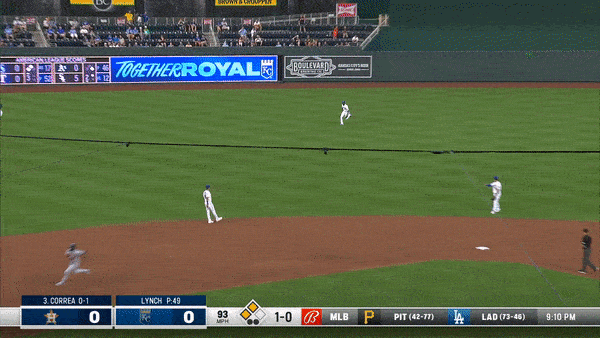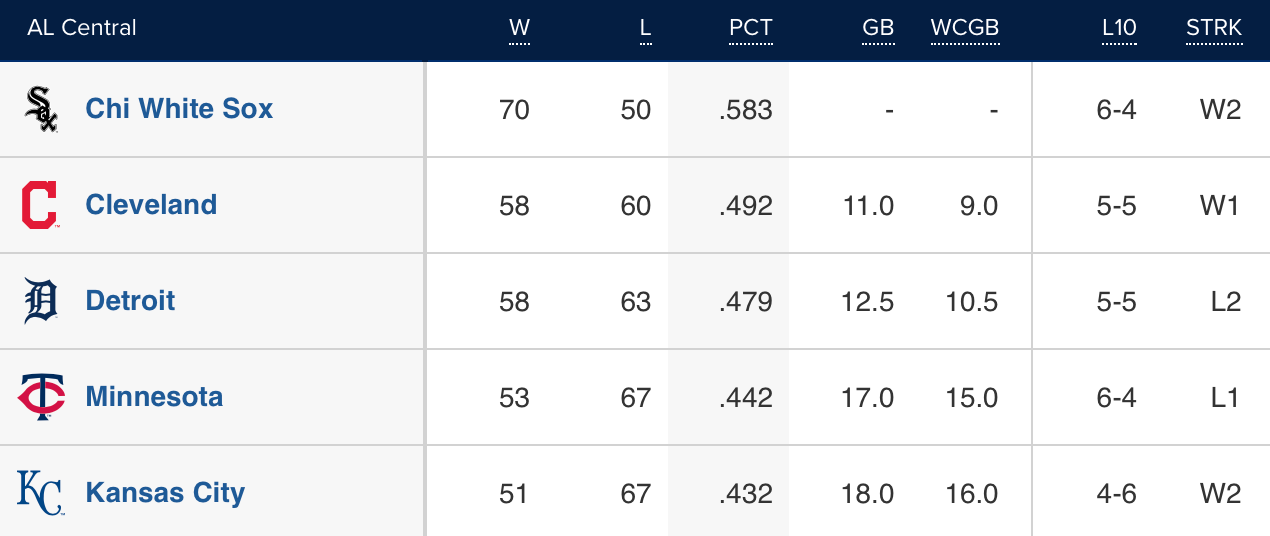Cruise control
Daniel Lynch shoved against the highest octane lineup in the league. Michael A. Taylor came up big at the plate and the field. And Hanser Alberto killed a lefty.
It seems like I marvel all the time about how baseball is just the most bizarre game. It is! Take these Royals. They just went through motions last weekend against the Cardinals, dropping all three games and looking every bit like a club playing out the string. A new team comes to town and suddenly, it’s like the Royals received a shot of adrenaline. The hitting is a little more timely. The pitching is bringing it. And, most importantly, the team is winning.
Against the AL West leading Astros the Royals followed up their Monday night comeback with a crisp 3-1 winner. That’s two in a row against one of the best teams in the league. Yeah, baseball is bizarre.
Daniel Lynch had a unique opening to his night. The first six batters who put the ball in play against him (over two-plus innings) absolutely scorched the ball.
The first three were hit in the first inning, and as you can see from the negative launch angle, were ground ball outs. The fourth came after a walk, was likewise hit on the ground and turned into two outs. The next two had a positive (and healthy) launch angle and were driven for doubles.
The difference, as usual, was location. The ground ball outs were fastballs (both four-seamers and sinkers) spotted on the corners. The doubles were four-seamers right down the pipe. Those were the only two fastballs that were located middle-middle from Lynch all night.
He did leave a few changeups in the middle of the plate. But Astros batters couldn’t do anything against that particular pitch all night. It was that good. This is a chart of all of his changeups thrown on the night (22 total) with the outcome of the pitch.
There’s a healthy dose of swing and miss. And some fouls, too. Lynch had a 41 percent CSW% (called strikes plus whiffs) on the change, which is just an exceptional rate that helps underscore how dominant the pitch was for the lefty. Just one ball was put into play off Lynch’s changeup: A ground ball off the bat of Diaz in the fourth inning. You won’t be surprised to learn that it left the bat at 103.3 mph.
Let’s take a moment to admire one of those changeups that was thrown for a swinging strike below the zone.
To quote the Pitching Ninja: ⚔️
While the changeup was working all evening, in the later innings, it felt like Lynch was extremely locked in with the slider. It was just effortless at that point; he was flicking the ball and spotting it exactly where he wanted to locate. Oftentimes, he’d get the batter to chase.
The most important slider Lynch threw on the night came in the third inning. This was the pivotal moment of his start, where everything was hanging in the balance. Lynch allowed a leadoff double followed by a walk. After Altuve advanced both runners on a groundout, Brantley was up, looking to break the game wide open. Lynch throws the slider about a quarter of the time to left-handed batters, but needed that pitch to get out of this jam. Three of the four pitches he delivered in that at bat were sliders. Brantley offered at all four, fouling off the first three before whiffing on the final pitch.
Lynch recorded five strikeouts on the night. Three came on the slider. Two were off the change. All were the result of a swing and miss.
Look at how Lynch attacked the Astros lineup in the top of the sixth. This was when the batting order flipped over for the third time, a dangerous moment in the game for any starter.
Lynch delivered two pitches in the zone in the frame. One was a first-pitch knuckle curve that Jose Altuve floated to left for the first out of the inning. This is important: Lynch threw only two knuckle curves all night. It was an exquisite pitch to throw to Altuve, facing him for the third time of the night. Altuve, certainly looking for something harder than 76 mph from Lynch was well out in front, hitting it off the end of the barrel. It was quite a looping pitch.
The other pitch in the zone was an elevated 2-0 fastball to Michael Brantley that was hit into center field for the second out of the inning. Brantley likes to hunt for the high pitch in the middle of the plate, slugging .500 on pitches located there. But when the pitch is over just to the inner third, his slugging percentage drops to .412. You do not want to miss to Brantley and let him extend his arms on an elevated pitch on the outer third.
It’s a dangerous pitch to throw 2-0, but it was just enough to the inner half of the dish that Brantley wasn’t able to square it up as he could have.
In the seventh, Lynch faced all right-handed batters and worked away from all four batters he faced.
As the kids say, hang this pitch chart in the Louvre. He struck out Aledmys Diaz on a changeup down and away. He struck out Taylor Jones on a slider down and in. As he approached 100 pitches his final inning was just a masterclass on location, tempo and stuff.
Lynch simply overmatched the Astros lineup on Tuesday. In his five starts since his return from Triple-A (remember, we’re going to conveniently ignore the first three starts of his major league career) he owns a 2.35 ERA with an 8.9 percent walk rate and 19.5 percent strikeout rate. He’s frustrating opposition bats to the tune of .216/.293/.342.
This…this is the guy we’ve been hearing raves about.
Lefty killer kills another lefty
For his career, Hanser Alberto murders left-handed pitching at a .331/.350/.450 clip. This split alone makes him a valuable bench piece for any team. (You would think perhaps a contender would make a play for him ahead of a trade deadline as they tried to build their club for the postseason, but that’s neither here nor there.) Except this season, Alberto has been charged more with attempted murder than actual homicide.
So that’s kind of weird. Alberto has accumulated the exact number of plate appearances against both left and right-handed pitchers in 2021. He has one more hit against right-handers. But he has two walks against left-handers. It’s a practical dead heat.
Maybe we should just put the idea that Alberto handles southpaws so much better than their right-handed counterparts on ice. At least for this season.
In his first two at bats against Framber Valdez, Alberto flied out both times to end an inning. Alberto saw only three pitches in those two at bats. Both outs were made on sinkers.
He came up in a critical situation on Tuesday with the score knotted at one and with runners on second and third with two outs. Instead of going to the sinker again, Valdez spun three consecutive curves. All three were in the zone.
Alberto took the first curve for a strike. He chopped the second one foul to the third base side. He waited on the third curve and yanked it down the third base line for the go-ahead double.
Maybe Alberto is still capable of lefty homicide. More likely, he benefitted from seeing three consecutive curves, all hittable pitches in the strikezone. Whatever the reason, it was exactly the hit the Royals required to jump ahead.
Players like Alberto and Michael A. Taylor (more on him in the next section) are guys who the Royals seem to find themselves attached to during these constant rebuilds. Guys who, when they’re signed, make sense as parts of the whole, but as the season progresses and the losses pile up and the drumbeat of “Let the kids play” grows ever stronger, don’t make a ton of sense on the roster. In fact, it can be downright maddening that they get as much playing time as they receive.
Yet they can still breakthrough and help the Royals win the game.
Taylor does it all
Taylor has been worth 1.2 fWAR this season, placing him ahead of higher profile offseason acquisitions such as Carlos Santana (0.9 fWAR) and Andrew Benintendi (0.0 fWAR). Taylor’s total is good for fourth among Royals hitters. The majority of his total comes from his defense. That was on display Tuesday as he unleashed a rocket of a throw to cut down a runner at home.
It cannot be overstated how important this play was in the course of the game. While Lynch pitched a strong game, he was struggling at the open of the third, allowing a leadoff double and a walk. He did record outs on the next two batters, but runners advanced to second and third. This single from Carlos Correa came on Lynch’s 25th pitch of the inning.
Taylor followed up the defensive play of the game with a run-scoring double in the bottom of the fourth. It came with two outs and scored Benintendi from first. Just a huge moment in the game that powered the Royals to victory.
Central issues
Angels 8, Tigers 2
With the game deadlocked at two in the top of the ninth, Jo Adell broke the game open with a grand slam off Gregory Soto. The Angels sent 11 batters to the plate and all six runs in their half of the inning scored with two outs. There’s our Tiger bullpen!
Cleveland 3, Twins 1
Eli Morgan threw six shutout innings, allowing just three hits while whiffing eight. Daniel Johnson opened the scoring with a two-run dinger in the fifth.
A’s 0, White Sox 9
Horrible scenes on the South Side as Oakland starter Chris Bassitt was hit in the head by a comeback line drive off the bat of Brian Goodwin in the second. Burch Smith relieved and allowed five runs to score in the inning. Reynaldo López threw five innings of one-hit ball before giving way to the Sox bullpen who finished the shutout allowing just three hits and a walk through the final four frames.
The Royals pull even with the Twins in the loss column. Meanwhile, with Detroit cooling off a bit over the last couple of weeks, dare we dream of a third place finish?
Up next
Happy Greinke Day! Do you still celebrate? Nobody would blame you if you did.








